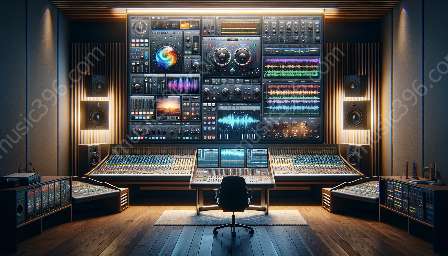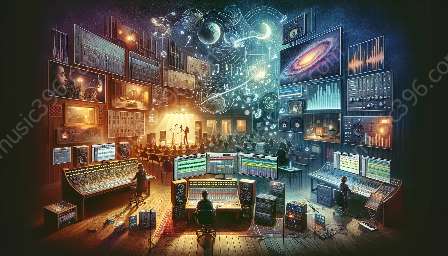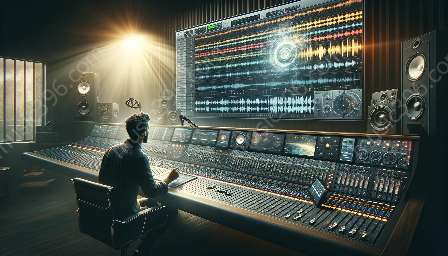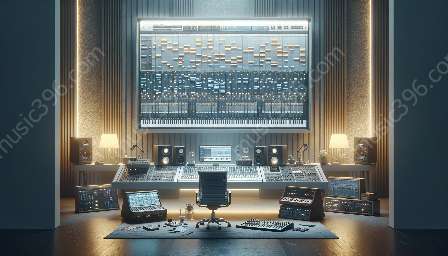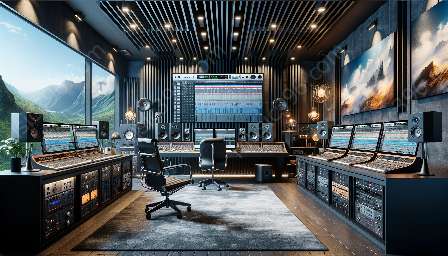Music, as a universal language, has been a significant part of human culture for centuries, with rich traditions and diverse styles. In recent times, the advent of digital audio workstations (DAWs) and their associated plugins has revolutionized the way music is created, recorded, and produced. This has led to a reevaluation of traditional musical traditions and their reinterpretation through innovative digital tools. In this article, we will delve into the fascinating topic of preservation and reinterpretation of musical traditions through DAW plugins, understanding the role of plugins in DAWs, and their impact on musical creativity.
Understanding DAW Plugins
Digital audio workstations, commonly known as DAWs, are software applications used for recording, editing, and producing audio files. DAWs have become an integral part of modern music production, offering musicians and producers a wide range of tools and functionalities to create high-quality music. One of the key components of DAWs is plugins, which are software components that can be added to a DAW to enhance its capabilities. Plugins come in various forms, including virtual instruments, effects, audio processors, and more. They play a crucial role in shaping the sound and character of a musical composition, allowing artists to explore new sonic possibilities and push creative boundaries.
The Impact of Plugins on Musical Creativity
With the rise of DAW plugins, musicians and producers have gained unprecedented access to a diverse palette of sounds and effects, empowering them to experiment with different musical styles and genres. This has sparked a wave of creativity and innovation, leading to the reinterpretation of traditional musical traditions through the lens of modern technology. Musicians are now able to preserve the authenticity of traditional sounds while infusing them with fresh perspectives and contemporary production techniques.
Furthermore, plugins have democratized the music production process, enabling aspiring artists and enthusiasts to explore and learn the art of music creation without the need for expensive studio equipment. This has opened doors for individuals from diverse cultural backgrounds to express their musical heritage and breathe new life into age-old traditions through the use of digital tools.
Preservation and Reinterpretation of Musical Traditions
Preserving musical traditions is vital in safeguarding the cultural heritage of communities around the world. Through the utilization of DAW plugins, traditional music can be archived, documented, and sonically preserved for future generations. Moreover, the reinterpretation of musical traditions through plugins allows for the adaptation of traditional sounds to contemporary contexts, ensuring that these traditions remain relevant and accessible to modern audiences.
For instance, traditional folk music, often passed down through oral traditions, can be digitally transcribed and reimagined using virtual instruments and effects found in DAW plugins. This not only revitalizes the traditional songs but also introduces them to a wider audience, bridging the gap between the past and the present.
Embracing Cultural Diversity
As technology continues to play a significant role in shaping the music industry, it has become increasingly important to embrace and celebrate cultural diversity through the preservation and reinterpretation of musical traditions. DAW plugins act as powerful tools for cultural exchange, allowing musicians to seamlessly blend elements from different musical heritages and create fusion genres that honor the richness of global music traditions.
By understanding the nuances of various traditional music styles and utilizing DAW plugins to respectfully reinterpret them, artists have the opportunity to foster a deeper appreciation for cultural diversity and promote cross-cultural dialogue through their music.
The Future of Musical Preservation and Reinterpretation
Looking ahead, the integration of traditional musical traditions with modern technology holds immense potential for the future of music. As DAW technology continues to evolve, so too will the ways in which traditional music is preserved and reinterpreted. New developments in artificial intelligence and machine learning may further enhance the capabilities of DAW plugins, enabling them to accurately emulate and preserve intricate nuances of traditional instruments and vocal techniques.
Additionally, the collaborative nature of music production in the digital age opens up opportunities for cross-cultural collaborations, where artists from different regions can come together to preserve and reinterpret each other's musical traditions. This exchange of ideas and techniques can lead to the creation of truly unique musical works that honor and celebrate the diversity of global musical expressions.
Conclusion
The preservation and reinterpretation of musical traditions through DAW plugins are opening up new frontiers in creative expression and cultural preservation. By understanding the role of plugins in digital audio workstations and embracing the potential of technology, musicians around the world can explore, celebrate, and safeguard the wealth of musical traditions that have been passed down through generations. As we continue to navigate the ever-changing landscape of music production, the combination of tradition and innovation through DAW plugins will undoubtedly shape the future of music in captivating and inspiring ways.



